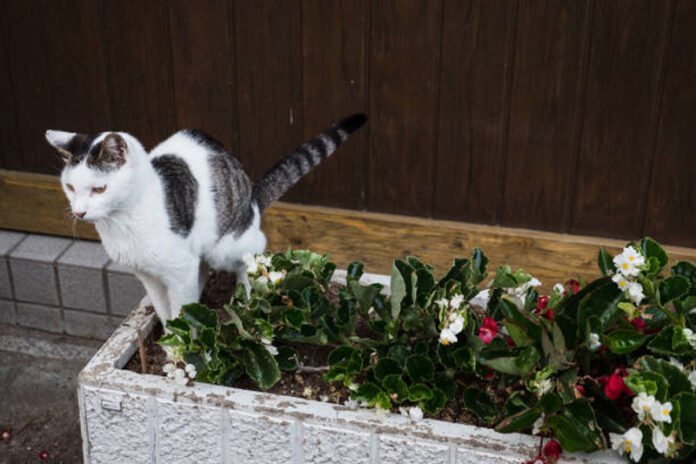First of two parts
Cat spraying, a common behavioral issue, can be a frustrating experience for cat owners. It is essential to understand the reasons behind this behavior and implement effective strategies to manage and potentially eliminate it.
Understanding the Behavior
Cat spraying is a specific form of urine marking, a behavior distinct from urination in a litter box. Spraying involves a cat backing up to a vertical surface, such as a wall, furniture, or door, and directing a stream of urine backward. This behavior is often accompanied by a twitching tail and a characteristic posture.
As described in the article “Cat Spraying: Why Cats Do It and How to Stop It” by PetMD, this is a territorial behavior. The urine marks serve as a visual and olfactory signal, communicating information to other cats about the sprayer’s presence, territory, and reproductive status.
Why Do Cats Spray?
Several factors can contribute to cat spraying. Identifying the underlying cause is crucial for effective management.

• Territoriality and Social Stress
One of the drivers of spraying is territoriality. Cats are naturally territorial animals, and spraying is a way to mark their boundaries. This is particularly common in multi-cat households, where competition for resources or social hierarchy issues can trigger spraying.
As noted in “Cat Behavior Problems: Marking and Spraying Behavior” by VCA Animal Hospitals, the presence of other cats, either inside or outside the home, can lead to increased spraying. The cat may feel the need to reinforce its territory, especially if it perceives a threat or feels insecure.
• Stress and Anxiety
As stated in “Cat Spraying” by the Cat Behavior Alliance, any disruption to a cat’s routine or perceived sense of security can trigger spraying. Anxiety can manifest in various ways, and spraying is one way a cat might cope with these feelings.
• Medical Conditions
In some cases, spraying can be a symptom of an underlying medical condition. Urinary tract infections (UTIs), bladder stones, or other health problems can cause discomfort and lead to inappropriate urination, which can be mistaken for spraying.
• Sexual Maturity and Hormonal Influence
Intact (unspayed/unneutered) cats are more prone to spraying, particularly males. Spraying is often used to attract mates and mark territory during breeding season.
About the Author: Mariana Burgos is a freelance artist, writer, and tutor. She has been a solo parent for 18 years now because she is the wife of Jonas Burgos, a Filipino desaparecido. She and her daughter are animal lovers and are active in advocating not only human rights but the rights of animals as well.
To be continued.









